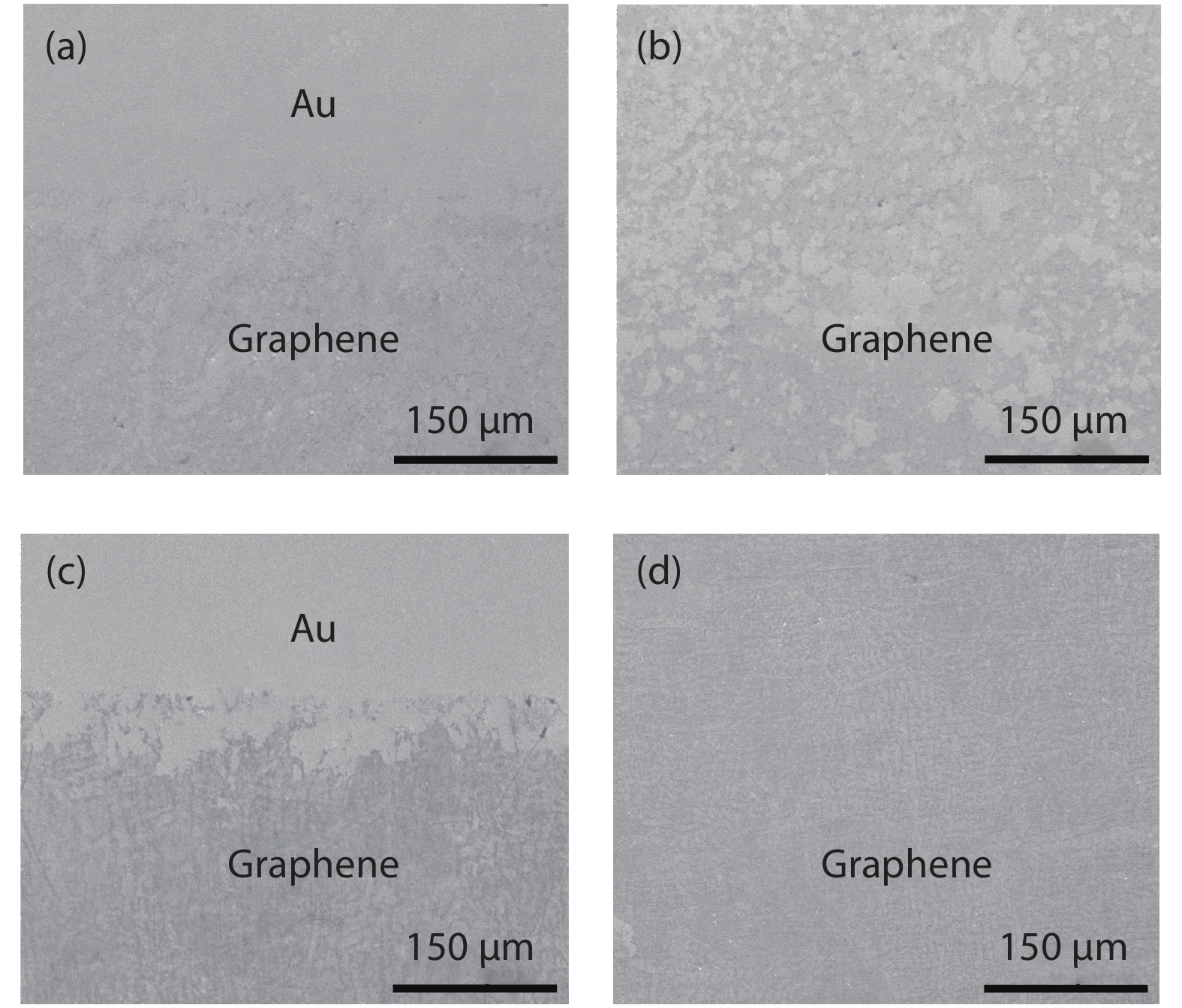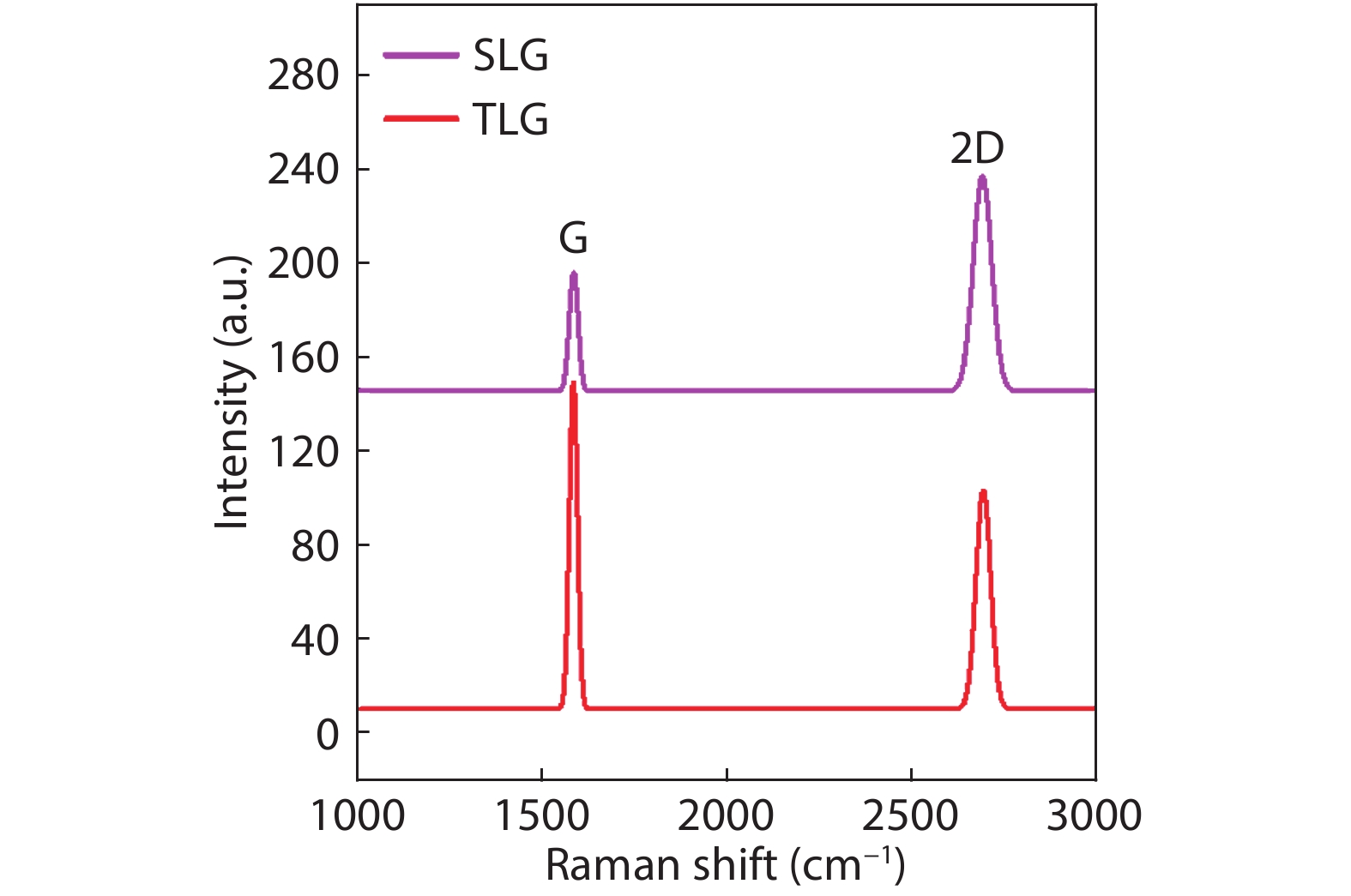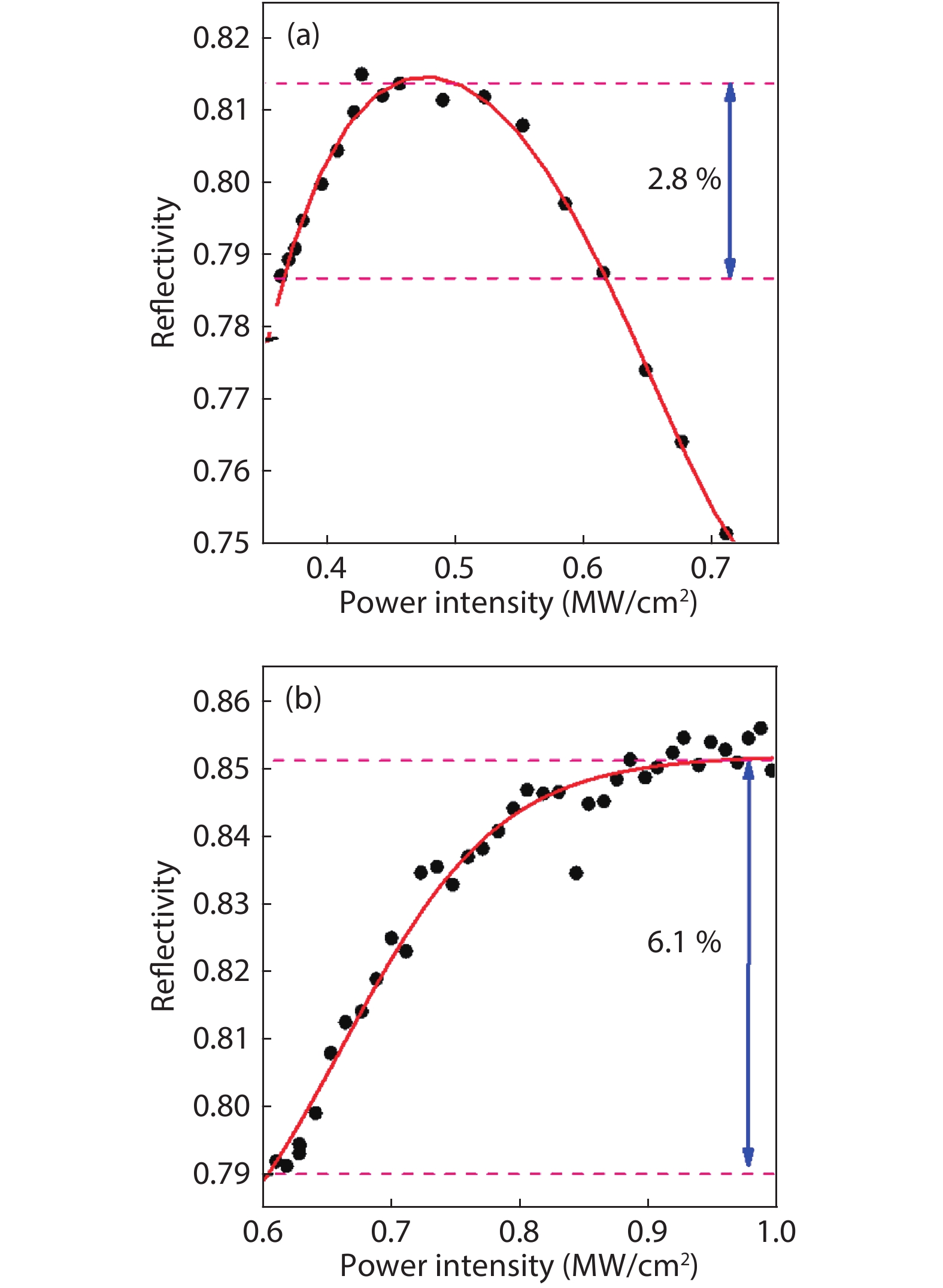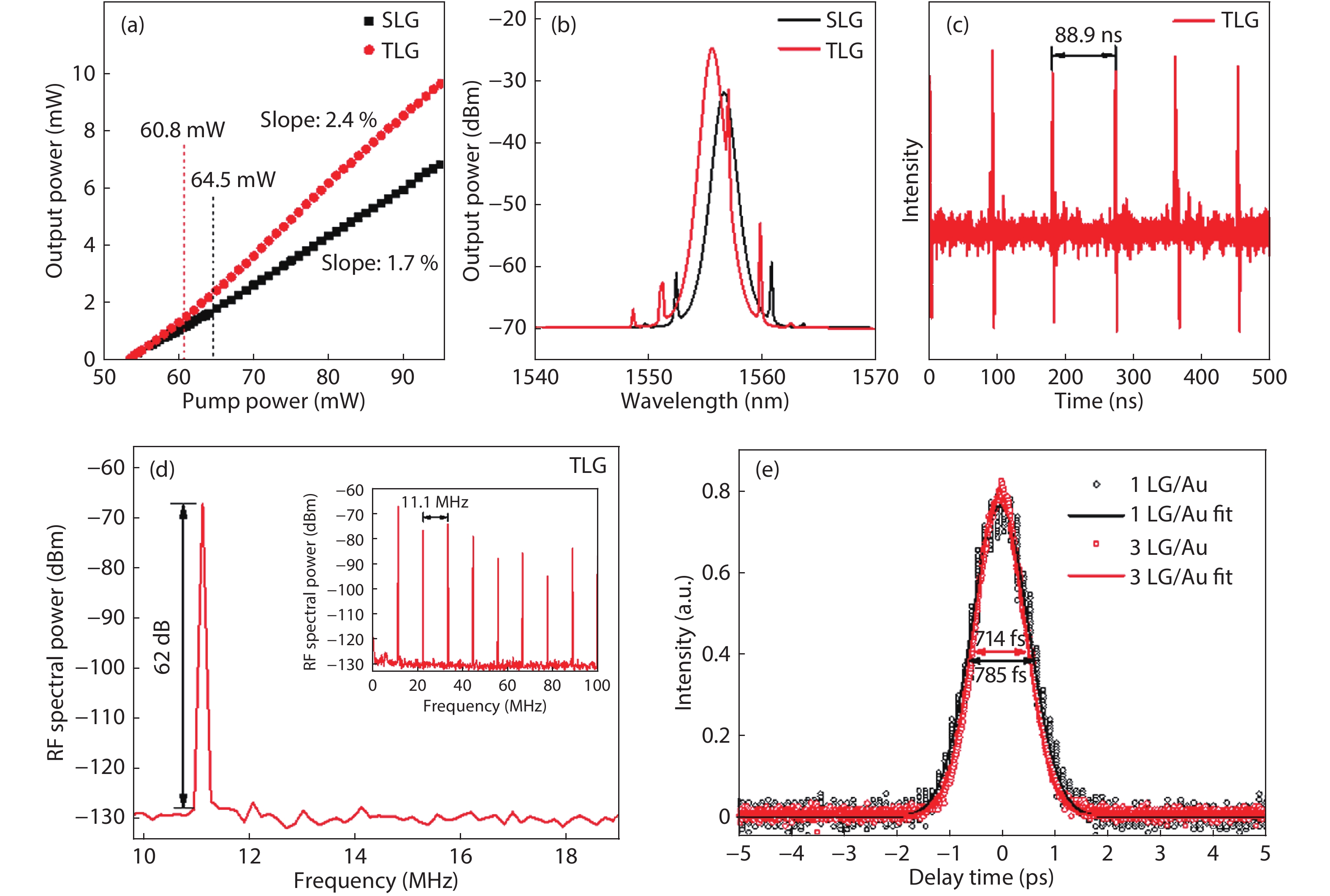| Citation: |
Cheng Jiang, Xu Wang, Jian Liu, Jiqiang Ning, Changcheng Zheng, Xiaohui Li, Ziyang Zhang. Realization of high-performance tri-layer graphene saturable absorber mirror fabricated via a one-step transfer process[J]. Journal of Semiconductors, 2020, 41(1): 012302. doi: 10.1088/1674-4926/41/1/012302
****
C Jiang, X Wang, J Liu, J Q Ning, C C Zheng, X H Li, Z Y Zhang, Realization of high-performance tri-layer graphene saturable absorber mirror fabricated via a one-step transfer process[J]. J. Semicond., 2020, 41(1): 012302. doi: 10.1088/1674-4926/41/1/012302.
|
Realization of high-performance tri-layer graphene saturable absorber mirror fabricated via a one-step transfer process
DOI: 10.1088/1674-4926/41/1/012302
More Information
-
Abstract
Graphene, as a saturable absorber (SA), has attracted much attention for its application in ultrashort pulse fiber lasers due to its ultrafast interband carrier relaxation and ultra-broadband wavelength operation. Nevertheless, during the stacking process of monolayer graphene layer, the induced nonuniform contact at the interface of graphene layers deteriorate the device performance. Herein, we report the fabrication of graphene saturable absorber mirrors (SAMs) via a one-step transfer process and the realization of the much enlarged modulation depth and the much reduced nonsaturable loss with tri-layer graphene (TLG) than single-layer graphene (SLG) due to the improved uniform contact at the interface. Moreover, the operation of 1550 nm mode-locked Er-doped fiber laser with the TLG SAM exhibits excellent output characteristics of the maximum output power of 9.9 mW, a slope efficiency of 2.4% and a pulse width of 714 fs. Our findings are expected to pave the way toward high-performance ultrashort pulse fiber lasers based on graphene SAs. -
References
[1] Zhang H, Tang D Y, Zhao L M, et al. Large energy mode locking of an erbium-doped fiber laser with atomic layer graphene. Opt Express, 2009, 17(20), 17630 doi: 10.1364/OE.17.017630[2] Sun Z P, Hasan T, Torrisi F, et al. Graphene mode-locked ultrafast laser. ACS Nano, 2010, 4(2), 803 doi: 10.1021/nn901703e[3] Liu J J, Liu J, Guo Z N, et al. Dual-wavelength Q-switched Er:SrF2 laser with a black phosphorus absorber in the midinfrared region. Opt Express, 2016, 24(26), 30289 doi: 10.1364/OE.24.030289[4] Lan K Y, Ker P J, Abas A F, et al. Long-term stability and sustainability evaluation for mode-locked fiber laser with graphene/PMMA saturable. Opt Commun, 2019, 435, 251 doi: 10.1016/j.optcom.2018.11.051[5] Zhao L M, Tang D Y, Wu X A, et al. Dissipative soliton generation in Yb-fiber laser with an invisible intracavity bandpass filter. Opt Lett, 2010, 35(16), 2756 doi: 10.1364/OL.35.002756[6] Lu L, Liang Z M, Wu L M, et al. Few-layer bismuthene: sonochemical exfoliation, nonlinear optics and applications for ultrafast photonics with enhanced stability. Laser Photonics Rev, 2018, 12(1), 1700221 doi: 10.1002/lpor.201700221[7] Wang X, Zhu Y J, Jiang C, et al. InAs/GaAs quantum dot semiconductor saturable absorber for controllable dual-wavelength passively Q-switched fiber laser. Opt Express, 2019, 27(15), 20649 doi: 10.1364/OE.27.020649[8] Sotor J, Sobon G, Tarka J, et al. Passive synchronization of erbium and thulium doped mode-locked laser enhanced by common graphene saturable absorber. Opt Express, 2014, 22(5), 5536 doi: 10.1364/OE.22.005536[9] Martinez A, Fuse K, Xu B, et al. Optical deposition of graphene and carbon nanotubes in a fiber ferrule for passive modelocked lasing. Opt Express, 2010, 18(22), 23054 doi: 10.1364/OE.18.023054[10] Zhang Z Y, Oehler A E H, Resan B, et al. 1.55 μm InAs/GaAs quantum dots and high repetition rate quantum dot SESAM mode-locked laser. Sci Rep-UK, 2012, 2, 477 doi: 10.1038/srep00477[11] Wang Z T, Chen Y, Zhao C J, et al. Switchable dual-wavelength synchronously Q-switched erbium-doped fiber laser based on graphene saturable absorber. IEEE Photonics J, 2012, 4(3), 869 doi: 10.1109/JPHOT.2012.2199102[12] Ashoori V, Shayganmanesh M. Analytical thermal modeling of graphene-clad microfiber as a saturable absorber in ultrafast fiber lasers. Appl Phys B, 2019, 125(3), 40 doi: 10.1007/s00340-019-7147-6[13] Zhang R L, Wang J, Liao M S, et al. Tunable Q-switched fiber laser based on a graphene saturable without additional tuning element. IEEE Photonics J, 2019, 11(1), 1500310 doi: 10.1109/JPHOT.2019.2892646[14] Martinez A, Sun Z P. Nanotube and graphene saturable absorbers for fiber lasers. Nat Photonics, 2013, 7(11), 842 doi: 10.1038/nphoton.2013.304[15] Zhang H, Tang D Y, Knize R J, et al. Graphene mode locked, wavelength-tunable, dissipative soliton fiber laser. Appl Phys Lett, 2010, 96(11), 111112 doi: 10.1063/1.3367743[16] Ma J, Xie G Q, P Lv P, et al. Graphene mode-locked femtosecond laser at 2 μm wavelength. Opt Lett, 2012, 37(11), 2085 doi: 10.1364/OL.37.002085[17] Hader J, Yang H J, Scheller M, et al. Microscopic analysis of saturable absorbers: Semiconductor saturable absorber mirrors versus graphene. J Appl Phys, 2016, 119(5), 053102 doi: 10.1063/1.4941350[18] Bao Q L, Zhang H, Ni Z H, et al. Monolayer graphene as a saturable absorber in a mode-locked laser. Nano Res, 2011, 4(3), 297 doi: 10.1007/s12274-010-0082-9[19] Bao Q L, Zhang H, Wang Y, et al. Atomic-layer graphene as a saturable absorber for ultrafast pulsed lasers. Adv Funct Mater, 2009, 19(19), 3077 doi: 10.1002/adfm.200901007[20] Ferrari A C. Raman spectroscopy of graphene and graphite: Disorder, electron-phonon coupling, doping and nonadiabatic effects. Solid State Commun, 2007, 143(2), 47 doi: 10.1016/j.ssc.2007.03.052[21] Dresselhaus M S, Jorio A, Hofmann M. Perspectives on carbon nanotubes and graphene Raman spectroscopy. Nano Lett, 2010, 10(3), 751 doi: 10.1021/nl904286r[22] Zhang X, Qiao X F, Shi W, et al. Phonon and Raman scattering of two-dimensional transition metal dichalcogenides from monolayer, multilayer to bulk material. Chem Soc Rev, 2015, 44(9), 2757 doi: 10.1039/C4CS00282B[23] Botti S, Rufoloni A, Vannozzi A, et al. Investigation of CVD grown graphene topography. AIP Conf Proc, 2018, 1990[24] Li X H, Wu K, Sun Z P, et al. Single-wall carbon nanotubes and graphene oxide-based saturable absorbers for low phase noise mode-locked fiber lasers. Sci Rep-UK, 2016, 6, 25266 doi: 10.1038/srep25266[25] Luo Z Q, Li Y Y, Zhong M, et al. Nonlinear optical absorption of few-layer molybdenum diselenide (MoSe2) for passively mode-locked soliton fiber laser. Photonics Res, 2015, 3(3), A79 doi: 10.1364/PRJ.3.000A79[26] Li X H, Yu X C, Sun Z P, et al. High-power graphene mode-locked Tm/Ho co-doped fiber laser with evanescent field interaction. Sci Rep-UK, 2015, 5, 16624 doi: 10.1038/srep16624 -
Proportional views






 DownLoad:
DownLoad:


















